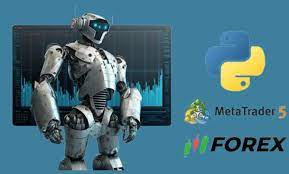In the dynamic world of foreign exchange (forex) trading, the quest for efficiency, accuracy, and profitability never ceases. Among the myriad tools and technologies available to traders, one particular innovation has sparked both intrigue and controversy: forex robots. These automated trading systems promise to revolutionize the forex robot operate in the forex market, but their efficacy and reliability remain subjects of heated debate.
Forex robots, also known as expert advisors (EAs), are software programs designed to execute trades on behalf of traders automatically. They operate based on pre-defined algorithms and parameters, aiming to identify profitable trading opportunities and execute trades without human intervention. The allure of forex robots lies in their potential to eliminate emotional biases, execute trades with split-second precision, and operate around the clock, thereby capitalizing on every possible market movement.
At first glance, the concept of forex robots appears enticing, offering the prospect of passive income generation and freeing traders from the burdensome task of constant market monitoring. However, delving deeper reveals a complex landscape fraught with challenges and risks.
One of the primary criticisms leveled against forex robots is their susceptibility to market volatility and unexpected events. While these systems may perform admirably in backtests or under specific market conditions, they often falter in the face of real-time fluctuations and unforeseen geopolitical developments. Critics argue that the rigid algorithms governing forex robots may lack the adaptability and foresight required to navigate the inherently unpredictable nature of the forex market.
Moreover, the proliferation of forex robots has led to concerns about their impact on market dynamics. Critics warn that the widespread adoption of automated trading systems could exacerbate market inefficiencies, amplify volatility, and even contribute to flash crashes. The rapid execution speeds of forex robots may exacerbate price movements, leading to situations where markets spiral out of control before human traders can intervene.
Despite these challenges, proponents of forex robots extol their virtues, pointing to instances of substantial profits and reduced workload for traders. Advocates argue that when properly calibrated and monitored, forex robots can complement human trading strategies, offering a valuable tool for diversification and risk management. Additionally, they contend that advancements in artificial intelligence and machine learning hold the potential to enhance the adaptability and performance of forex robots, mitigating many of the criticisms leveled against them.
However, it is crucial for traders to approach forex robots with caution and discernment. While these automated systems can augment trading strategies, they are by no means a panacea for success in the forex market. Traders must conduct thorough due diligence before deploying forex robots, evaluating factors such as historical performance, risk management mechanisms, and compatibility with their trading objectives.
Furthermore, traders must remain vigilant and proactive in monitoring and adjusting forex robots to align with evolving market conditions. Relying blindly on automated trading systems without exercising oversight can expose traders to significant risks, including financial losses and reputational damage.
In conclusion, forex robots represent a double-edged sword in the realm of forex trading. While they offer the promise of enhanced efficiency and profitability, they also pose significant risks and challenges. Traders must weigh the potential benefits against the drawbacks, exercising prudence and diligence in their utilization of these automated systems. Ultimately, success in forex trading hinges not solely on technological innovations but also on the skill, judgment, and adaptability of the traders themselves.


